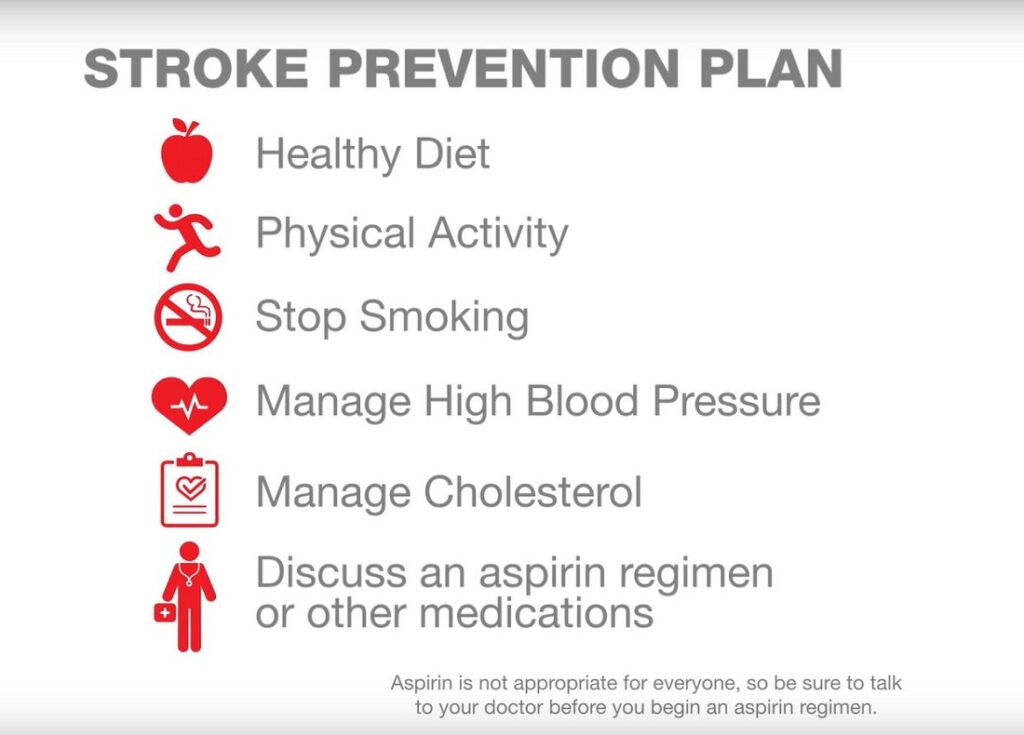Public Health Strategies for Stroke Prevention
Creating a Future Free of Strokes: Public Health Programs and Regulations
Stroke puts a heavy strain on people, families, and healthcare systems as it is one of the main causes of disability and death. Thankfully, a significant portion of strokes can be avoided. In order to improve access to high-quality stroke care, ensure prompt diagnosis, and promote stroke prevention, public health efforts and policies are essential.
Table of Contents

Initiatives in Public Health: Encouraging Healthful Behaviors
Public Health Strategies for Stroke Prevention
The main goals of public health campaigns are to empower people to make healthy lifestyle decisions and to educate the public about the risk factors for stroke. The following are some crucial tactics:
Public Health Strategies for Stroke Prevention
- Healthy Diet Promotion: With a focus on fruits, vegetables, and whole grains, public health programs promote a balanced diet reduced in sodium, trans fats, and added sugars.
- Campaigns for Physical Activity: Encouraging regular physical activity via corporate wellness programs, parks and recreation initiatives, and community activities promotes a healthy lifestyle.
- Programs for Quitting Smoking: Educational campaigns and programs for quitting smoking are essential for lowering the risk of stroke.
- Initiatives for Blood Pressure Control: Public health campaigns seek to promote treatment adherence and raise awareness of the value of routine blood pressure monitoring.
- Programs for Diabetes Management: Resources and programs aimed at controlling diabetes, a significant risk factor for stroke, are crucial to preventing strokes.
- Alcohol Moderation Awareness: It’s critical to inform the public about the risks associated with excessive alcohol use as a stroke risk factor.
The Results of Public Health Programs:
Public Health Strategies for Stroke Prevention
- Reducing Risk Factors: Public health initiatives can considerably lower the prevalence of stroke risk factors by promoting healthy behaviors and lifestyle modifications.
- Developing Stronger Communities: Campaigns for education provide people and communities the tools they need to take charge of their health and avoid stroke.
- Encouraging Early Detection: By drawing attention to the symptoms of a stroke, public awareness campaigns can motivate people to get help right away, which will improve treatment results.
Reforming Policies to Address Systemic Problems
Public Health Strategies for Stroke Prevention
In order to foster healthy living and lower the risk of stroke, public policy is essential. These are some important policy domains:
- Healthy Food Access: Access to wholesome food options can be enhanced by policies that assist supermarkets and healthy food options in underprivileged communities.
- Policies against Smoking: One of the biggest risks to public health is secondhand smoke exposure, which is decreased by smoke-free workplaces and public areas.
- Taxation on Unhealthy Products: Taxing unhealthy products can discourage usage and encourage the use of healthier alternatives. Examples of such products include cigarettes, sugar-filled drinks, and unhealthy foods.
- School Lunch Programs: Putting in place wholesome school lunch programs promotes wholesome eating practices at an early age.
- Workplace Wellness Programs: Financial incentives for employers to adopt wellness initiatives encourage employees to be physically active and make healthier decisions.
- Affordable Housing: Improving living circumstances and addressing housing concerns can lead to better lifestyles and lower stress levels, which lower the risk of stroke.
The significance of policy modifications
Public Health Strategies for Stroke Prevention
- Long-term Effect: Modifications to policy foster a lifestyle that is conducive to health and have an effect on future generations.
- Taking Care of Social Determinants of Health: Stroke risk is influenced by social determinants of health such as access to healthcare and poverty, which can be addressed by policy.
- Increasing Public Health Resources: Funding for public health campaigns and stroke prevention programs may rise as a result of policy changes.
Cooperation for Advancement: Striding Toward a Future Without Strokes
Public Health Strategies for Stroke Prevention
The best results from public health policies and efforts come from cross-sector collaboration. To advance stroke prevention and treatment, cooperation between public health organizations, medical experts, legislators, community organizations, and the commercial sector is essential.
Put Money Towards the Future:
Public Health Strategies for Stroke Prevention
It is not just a health issue but also an economic one to fund public health programs and policies for stroke prevention. Lowering the incidence of stroke enhances overall quality of life, boosts labor force participation, and saves healthcare expenditures. There is a great deal of promise for reducing the number of strokes and their severe effects in the future when effective policy improvements are coupled with increased public awareness.
Public Health Strategies for Stroke Prevention
This is merely the beginning. You might provide particular instances of public health programs or regulations that have been put into place in various nations or areas.


